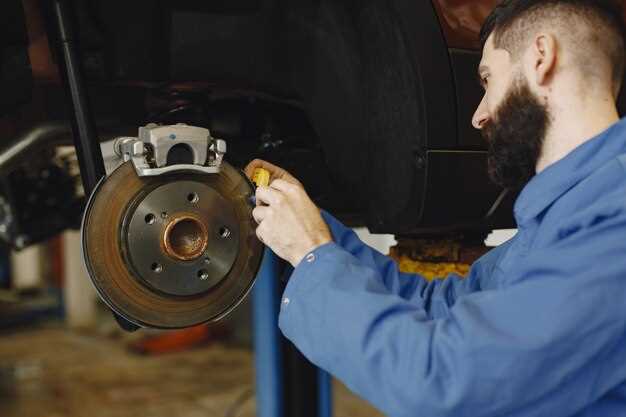
Brake pads are a crucial component of your vehicle’s braking system, ensuring that your car can stop safely and effectively. Over time, these pads wear down due to friction and heat generated during braking, which can lead to reduced performance and even dangerous driving conditions. Understanding the signs that indicate it’s time to replace your brake pads can help maintain your safety on the road.
One of the most common indicators that your brake pads need replacing is a high-pitched squealing or grinding noise when you apply the brakes. This sound often signifies that the brake pads have worn down to a point where metal is rubbing against metal, leading to potential damage to your rotors. Additionally, if you notice your vehicle takes longer to stop than usual or if the brakes feel less responsive, it could be time to inspect your brake pads.
Other warning signs include visible wear, such as a thin layer of padding on the brake pads or a warning light on your dashboard. It’s essential to pay attention to these indicators, as neglecting brake pad maintenance can result in more severe issues and costly repairs. Keeping your brake system in top condition not only ensures your safety but also enhances the performance and longevity of your vehicle.
Unusual Noises When Braking
One of the most significant indicators that it may be time to replace your brake pads is the presence of unusual noises during braking. If you hear grinding, squealing, or squeaking sounds each time you apply the brakes, it’s crucial to investigate further.
Grinding noises are often a clear indication that your brake pads are worn down to the metal. This can cause damage to the rotors, leading to costly repairs. The metal backing of the brake pads makes contact with the rotor, resulting in that unpleasant grinding sound. Ignoring this noise can lead to severe brake failure and compromised safety.
Squealing or squeaking noises typically occur when the brake pads have built-in wear indicators. These indicators are designed to make a high-pitched noise as the pads wear down, alerting you to the need for a replacement. If you hear these sounds, it’s wise to schedule a brake inspection promptly to avoid further wear and potential damage.
If you experience any unusual noises while braking, do not overlook them. Addressing the issue early can prevent more significant problems down the road and ensure that your vehicle operates safely. Regular brake inspections and maintenance are essential to keeping your braking system in optimal condition.
Vibration or Pulsation in the Brake Pedal
Experiencing vibration or pulsation in the brake pedal is a significant indicator that your brake pads may need replacing. This sensation can be alarming and should not be ignored, as it often points to underlying issues within your braking system.
Common causes of brake pedal vibration include:
- Worn Brake Pads: Over time, brake pads become worn unevenly, leading to inconsistent contact with the brake rotor. This unevenness can cause vibrations when you apply the brakes.
- Warped Brake Rotors: If the brake rotors are warped due to excessive heat or wear, they can lead to pulse-like sensations in the brake pedal. This is often felt more prominently during hard braking.
- Debris on Brake Components: Accumulated dirt, dust, or other debris between the brake pads and rotors can lead to irregular contact, resulting in vibrations.
- Improperly Installed Brake Components: If brake pads or rotors were improperly installed, this could cause uneven wear and lead to vibrations when braking.
If you notice vibrations or pulsations, it is advisable to have your braking system inspected immediately. Continuing to drive with this symptom can not only compromise your safety but may also lead to more extensive and expensive repairs.
Regular maintenance and timely replacement of brake pads can significantly enhance your vehicle’s braking performance and overall safety.
Increased Stopping Distance
One of the most alarming signs that your brake pads may need replacement is an increased stopping distance. When you apply the brakes and notice that your vehicle takes longer to come to a complete halt, it indicates that the braking system is not functioning efficiently.
Brakes rely on friction to slow down the vehicle, and worn-out brake pads can diminish this friction. As the pads wear down, they lose their ability to grip the brake rotors effectively, leading to longer stopping distances. This condition can be particularly dangerous, as it increases the risk of accidents, especially in emergency situations.
If you routinely find yourself pressing the brake pedal harder or for longer periods to achieve the same stopping power, it’s crucial to have your brake components inspected. Other factors, such as damaged rotors or low brake fluid levels, can also contribute to decreased braking efficiency, but worn brake pads are often the primary suspect. Addressing this issue promptly can enhance your safety on the road.
Signs of increased stopping distance include: a noticeable lag when braking, a feeling of instability, or the need for excessive pedal pressure. Monitoring these changes is essential for maintaining your vehicle’s performance and ensuring safe driving conditions.
Regular maintenance of your braking system, including timely brake pad replacements, is vital for preserving optimal stopping power and overall vehicle safety.
Warning Light on Your Dashboard

The presence of a warning light on your dashboard can be a clear indicator that your brake pads need replacement. Most modern vehicles are equipped with advanced monitoring systems that detect issues within the braking system, including the wear of brake pads. When the brake pad thickness reaches a critically low level, a warning light will typically illuminate to alert the driver.
It’s essential to understand the significance of this warning light. Ignoring it could lead to more severe problems, including damage to the brake rotors and decreased stopping power, which can compromise your safety on the road. The warning light may resemble an exclamation mark or a circle with parentheses around it, often colored in yellow or red, indicating the urgency of the situation.
If you notice this alert, you should take immediate action by checking your vehicle’s manual to confirm the specific meaning of the light. Following this, a thorough inspection of your brake pads should be conducted, preferably by a certified mechanic. Timely attention to a dashboard warning light can prevent expensive repairs and ensure that your vehicle remains safe to drive.
Brake Pad Thickness and Wear Indicators
The effectiveness of your vehicle’s braking system heavily depends on the condition of the brake pads. One of the primary indicators of brake pad health is their thickness. As brake pads wear down over time, their ability to generate friction decreases, which can lead to compromised braking performance. Regularly monitoring the thickness of your brake pads is essential for maintaining vehicle safety and performance.
Brake pads typically have a minimum thickness specification, which varies by manufacturer but is often around 3mm. When the pads wear down to this thickness, it’s generally time to consider replacement. In addition to thickness, some brake pads come equipped with integrated wear indicators that provide visual or audible warnings when the pads are nearing the end of their service life.
Here’s a simple breakdown of common wear indicators and their meanings:
| Indicator Type | Description |
|---|---|
| Visual Indicator | Look for grooves or marks on the brake pad surface. If the wear indicator is visible or the pad is smooth without grooves, it’s time for a replacement. |
| Audible Indicator | A squeaking or grinding noise when braking usually indicates that the pads have worn down to the metal backing, necessitating immediate replacement. |
| Thickness Measurement | Use a caliper to measure the thickness of the brake pads. If they are below the manufacturer’s specified minimum thickness, replacement is needed. |
In summary, regularly checking the thickness of your brake pads and being aware of wear indicators is crucial for safe driving. Don’t overlook these signs; acting promptly can prevent further damage to your braking system and ensure your safety on the road.
Changes in Brake Response or Feel
A vital aspect of vehicle safety is the responsiveness of the brake system. Changes in how your brakes respond or feel can be an indication that it’s time to replace your brake pads. Here are key signs to watch for:
- Soft or Spongy Brake Pedal: When pressing the brake pedal feels unusually soft or requires more effort to engage, it may indicate worn-out pads or air in the brake line.
- Hard or Stiff Brake Pedal: A brake pedal that feels hard or resists pressure could signal that the pads are too thin or that other issues, such as a malfunctioning brake booster, are present.
- Delayed or Reduced Response: If there’s a noticeable delay when you press the brake pedal or a lack of immediate response, this could indicate pad wear or issues with the brake system.
Monitoring these changes is crucial for maintaining safety on the road. If you experience any of these symptoms, it is advisable to have your brakes inspected by a professional.















